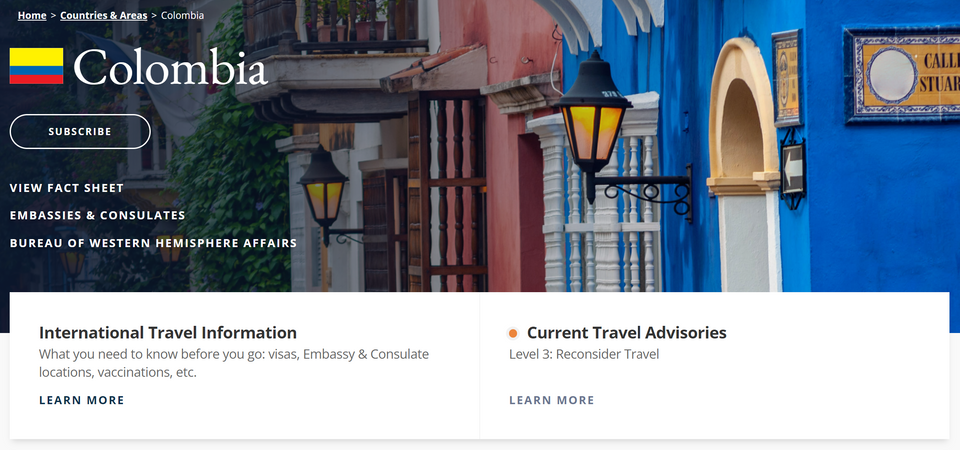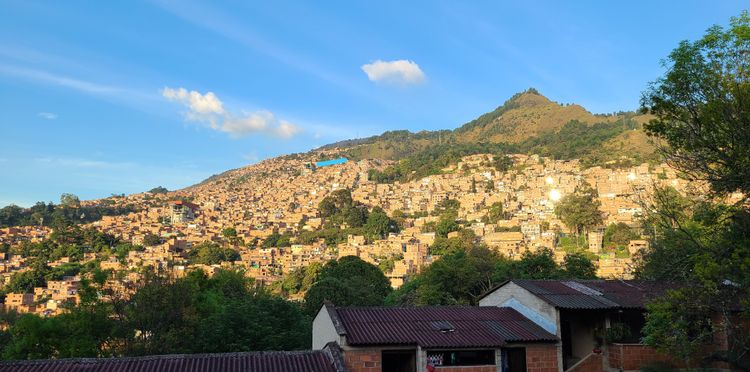Travel Safety: to whom do I listen?

The US is “world-famous” for our gun violence. So, while I’ve had people from the US express concern for my safety in Colombia, I’ve heard far more parents of international students express concern for the safety of their child studying in the US. Granted, most news reported is bad news, so it is understandable that not everyone has updated their perception of Colombia from the height of the violence in the 90s. TV shows about Pablo Escobar are more popular (and accessible) than any media stories about how things are calm and uneventful.
I’m six months into my time in Medellín and have felt quite safe throughout. Now, of course, like in any large city, I must be “street smart.”
The first time I lived abroad I was 19 in Spain for a summer. At that point, I was probably more naïve and lucky than smart. I still remember having to call home for someone to cancel my debit card because my purse was stolen. My brother-in-law answered the phone and quickly did the math to figure out it was 3am in Spain…oops. Thankfully, that’s the worst that happened, and I learned my lesson about how to keep important things close to my body and staying alert in public.
Fast forward about two decades, I now take much more care to gather information when traveling to a new place or one outside my comfort zone.
I seek information from the following sources:
- Common safety advice, such as don’t wear fancy jewelry and avoid being an obvious tourist
- Local advice on recommended behavior, such as don't use a cell phone in public where someone could snatch it out of your hand as they bike by
- US Department of State travel website
- Traveler advice for my specific destination, such as travel blogs and guides
- My own instincts
The challenge here is that there is often conflicting information among these sources. The US Department of State paints THE WORST case scenario. That’s their job. Their advice often conflicts with travel guides and my instincts. While local advice can vary depending on who you ask. Also, any specific source has its limits, such as:
- All this advice comes from humans and we humans are full of biases (confirmation bias, insider bias, etc.). I, for one, have been surprised to learn that a person I trusted hurt someone. I have held ideas about “bad parts of town” that were out-of-date, poorly informed, and biased. And I’ve given travel advice to people when I couldn’t truly know how they might be received compared to my experience. So, I listen to locals when they say someone is trustworthy, tell me where I shouldn’t go, or that I’ll be fine – and I keep in mind the info could be flawed.
- Even my instincts can lead me astray. I have talked myself out of listening to that “Spidey sense” that something is wrong and regretted it. But I’ve also listened to, say my instinct to avoid conflict, and missed out on an opportunity to speak up about something harmful happening when I was in fact safe to do so. It’s a long journey, but I’m getting better at listening to what my instincts are telling me and checking in with where they are coming from.
I have found all these sources useful, though I don’t try to engage them all at once. It can be easy to hit information overload and just turn away from an opportunity all together. With time I’ve found a balance and flow that works for me.
If you happen to be in Eugene, Oregon, I highly recommend a self-defense/assault prevention course with Ryan Kelly at University of Oregon!
Stay tuned for a specific example from Medellín of conflicting sources and making a judgement call regarding safety.


Member discussion